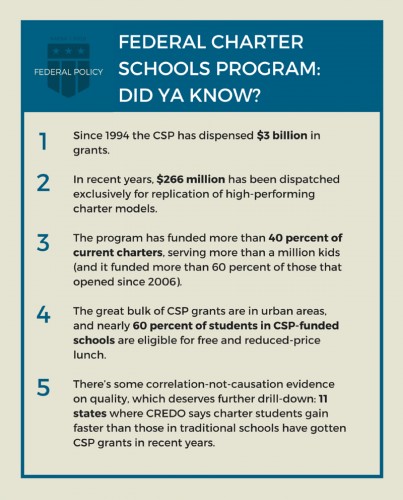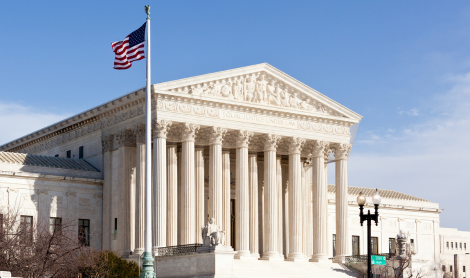December 2015 was a big month for the federal Charter Schools Program (CSP). It was reauthorized as part of the Every Student Succeeds Act (ESSA), with some welcome improvements in program design; it won a significant bump of $80 million in funding under the FY16 budget; and, in a step toward increased transparency, the Department of Education (DOE) published a huge dataset listing all the CSP grants back to 2006, plus some top-line analysis.

Five years ago, all this might have been greeted with a shrug. Since the CSP was created in 1994, there has been strong bipartisan support for charters at the federal level and the program’s been reauthorized several times without much fuss. And since the level of charter funding is a rounding error in a trillion-plus federal budget, the CSP generally flown below the radar.
That started changing in 2012, when the DOE’s Inspector General reported big gaps in information on how grants were spent. Critics have piled on since then with two lines of argument: First, the lack of sunlight has resulted in throwing away federal funds with little accountability, and second, that the federal government really has no business running a fund for charter school special-interests.
The mega-dataset shines some sunlight on the CSP’s record, giving wonks on all sides of the charter debate plenty of grist for their arguments. Some new questions have already arisen, including why a chunk of federal startup funds go to charter schools that never start up. The DOE says that 699 “prospective schools” have gotten grants, and goes on to explain that these include “situations where an operator planned for, but has not yet opened, a school.” That makes sense, since DOE’s current guidance allows an 18-month window between award and opening. But this group also includes some number of long-ago grants for schools that will never open, and it’s not clear how many fall into either bucket. At an average amount of more than $207,000 per “prospective” school, that’s a big unknown that needs to be cleared up, pronto.
As to the broader swipe some are now taking at the entire existence of the CSP, let’s be clear: There’s good reason for federal support of public charter schools. States were doing next to nothing in 1994 to defray the unique costs of planning and starting these new public schools, and sadly, that picture hasn’t improved much. And the demographic data just released illustrates not only the huge demand for the grants, but also the congruence between the CSP’s mission and that of ESSA’s forbear, the original Elementary and Secondary Education Act (ESEA) of 1965. When more researchers get to work on the new dataset, I think they will see that the CSP has helped millions of kids move beyond the circumstances of their birth in just the way the ESEA originally intended.


